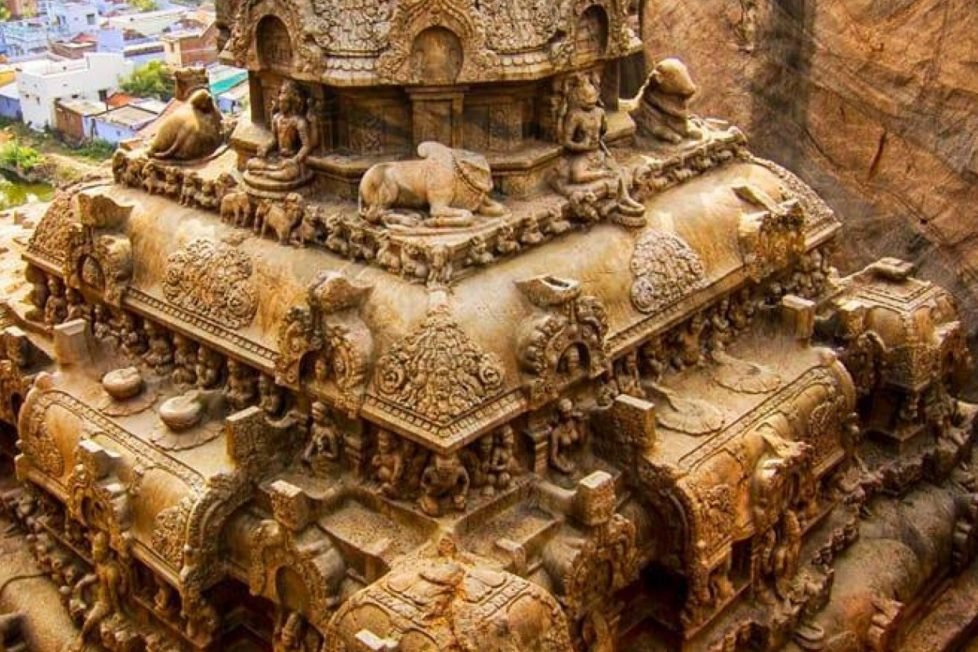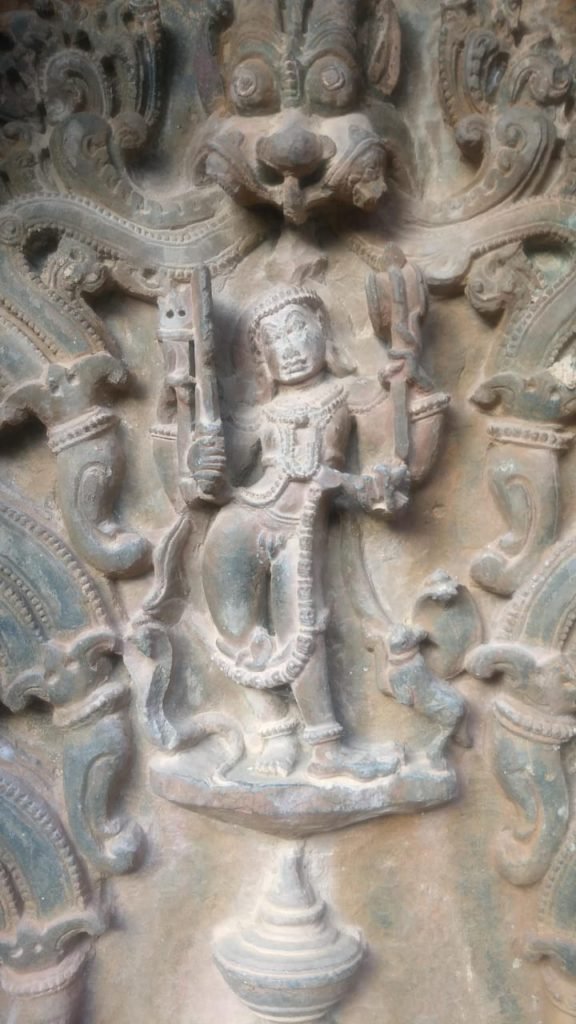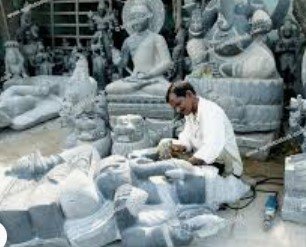Hindu Temple Introduction, Iconography and Symbolism.(part 2)


(This is in continuation with my earlier article on Why is a Hindu Temples different from other places of worships. Read here. The subject of Hindu temples is extremely vast that it would take many life times to study just one book in stream of this deep knowledge treasure. I have made an attempt to write about Indian Temple from a point of view of someone who appreciates Art. As someone who has just started the journey which should ideally have been an integral part of my education but thanks to our colonial mindset in education segment I am just beginning to understand of my glorious past. My purpose to write is to bring forth a glimpse of the subject that have always made me curious and I was compelled to share for benefit of fellow curious souls. I am an novice and I ask for forgiveness from Ma Sarasvati for any error I may have made in my learning and sharing.)
Indian Temple is an ocean where all streams of Art, Knowledge, Philosophy, Training, Economics & Spiritualism assimilate themselves like rivers that have traveled long distances. Like the flowing river embraces the course, the different streams have evolved with time & place, accumulating nuisances of the civilizations that fell in its trail. It exchanged notes and carried all the knowledge that maketh our great knowledge system. Indian Knowledge System (IKS) is a vast subject that will take many lifetimes to understand and topic for another day. This is a minute share about our beautiful temples that mesmerize and challenge human comprehension with their magnanimous size and inconceivable artistic sculpturing.

Purpose of life
Moksha is one of the pillars of Sanatan Dharma, and one of the paths amongst many to achieve it is Sadhna. There are two dimensions to life Inwards (Antarmukha) and Outwards (Bahirmukha). Antarmukha is looking inwards where one checks their quality of thought, action, behavior, relationship. Bahirmukha is the external factor of worldly activities. For Sadhana one can choose a quiet place/ pooja room or a hillside to spend time looking inwardly and introspect which is an age-old tradition. Similarly, a Temple or Devalya is visited for collective Sadhna. Inner peace has to be realized to enjoy the external faculties. We will explore the many roles of the Temples are we journey ahead. Temples were more than a place of Sadhna & Puja. All Sanatan Dharma paths lead to Moksha.
The Beginning
Before the grand stone temples came into being humans made mud & wood temples. Exchange of knowledge was a constant factor throughout human evolution leading to interesting events resulting in many possibilities and development. It is understood that the grand Stupas in Purushapura (present-day Peshawar, Pakistan) were an inspiration to build giant structures. The origins of Buddhist images have been well addressed by French Indologist M. Foucher. In the Vedic times, Bhagavan and Devata were worshipped not in temples as the present day but in the open air. It is admitted by scholars that divine images were produced in B.C 500. Panini and Patanjali were familiar with the images of God but unfortunately, we have no remains of the image of these. All the remains of Indian Sculpture of remote antiquity belong to the Buddhist group. The history of Indian art and sculpture is attributed to images and sculptures of Buddhist origin. The first Indian image that was made by an Indian sculptor was the image of Lord Buddha modeled by a Gandhara artist. We cannot place the beginning of the Hindu image in the pre-Buddhist period as we have not yet discovered any physical remains which may be buried somewhere waiting to be unearthed, though the oral descriptions are available. The earliest specimens of Hindu images can be found in the Kushan coins. In one of the coins of the Kushan King, we can see the image of Bhagwan Shiva represented with two arms. Similarly, the coins of Kanishka also supply us with a representation of the great Bhagwan Shiva, and these coins may be dated as early as A. D. 50. pre-dating the first Buddha Sculpture. To sum it up, the use of icons and symbols is ancient and predates the origin of sculpture and Temple architecture.

This is an artwork by the author in watercolor. A pair of the two symbols in Indus Valley script means ‘Neelkantha’ or the ‘the Great God’ as deciphered by Iravatham Mahadevan (Indian Epigraphist).

Purpose of a Temple
The primary role of a Hindu Temple was to house a deity and secure the fulfillment of the formulated rituals to preserve the divine energy of the center while allowing the devotees to connect with the divine and to uplift themselves moving towards enlightenment. Human minds perceive what appeals to the senses. It needs a physical form, features, functions that are simple to comprehend for a human brain which led to the origin of the science of creating deities to connect that is discussed in the previous article (link above).

Poetry in Stone.
The above term rightly coined by Vijay Kumar Sunderashan who has contributed immensely in the field of getting stolen and looted sculptures/artifacts by colonizers and black marketers back from all over the world.
This Goad-headed Goddess from 8th century was recently found in a country side garden in England will soon be returned to Uttar Pradesh, India from where it was stolen.
The sculptural tradition in India, the Shilpa Parampara, is closely linked to the architectural field and the two together came to be known as the Vaastu Parampara, the sculptor as Shilpi. The designers and artists of the classical traditions of sculpture and architecture were known as Vishwakarma. The name finds a place in the Vedas and Puranas. All the skilled work connected with building and sculpture came under their direct purview.

Sculpting is a principal part of the Bharatiya heritage, as amply evidenced by temples and their incomparable artwork. The transference of knowledge in the sculptural has been hereditary. A sculptor’s workshop became the learning ground for the son. During the daytime, practical techniques were taught, and later in the evening, theoretical knowledge was transferred through the Shilpa text. Shilpa text Manasaram adds that the Shilpi should have a thorough understanding and knowledge of all the Vedas. Various other texts mention knowledge of Puranas, Natya Shastra, Sangeet Shastra, and thorough communication in the art of poetry and composition as a principal requirement. The text describes, ‘The Shilpi should have highly developed moral and spiritual values, should be compassionate, should be without anger or envy, without worries. He should always be content, not ambitious, with the sense under control, adhering to truth, and with a highly developed sense of responsibility. He should be without serious ailment, and with a harmonious physical body that reflects the balance in his inner being’. The artist’s guna or characteristics is transformed into a created object, it is of great importance that the artist maintains the purity of the inner being. These are prodigious benchmarks to achieve and one can only imagine the geniuses of these talented master craftsmen.
I will continue on Shilpa Shastra, Symbolism and Iconography of Hindu Temples in my following articles, keep reading. Visit these marvelous structures, appreciate the art and science that our ancestors developed and left for generations to come, for they have lot of stories to tell. (Read next article, part 3 here).
Credits: I would like to thank a long list of people whose work has helped, inspired, and I learned a lot to write this piece. V. Ganapathy Sthapati, Stella Kramrisch, Jitendra Nath Banerjea, T.A. Gopinath, Talks by Shashikala at its.iitgn.ac.in, Harish Johari, Sahana Singh, Talk by Sinu Joseph, Rare books by multiple authors on Indian Temple and architecture, Iconography and Symbolism from the site https://indianculture.gov.in/. Special Thanks to Vibhu Academy, team, and Guruji G. L Bhat and Arthi.
DISCLAIMER: The author is solely responsible for the views expressed in this article. The author carries the responsibility for citing and/or licensing of images utilized within the text.
